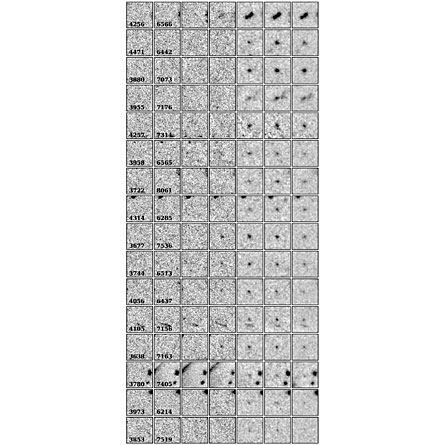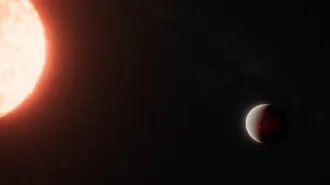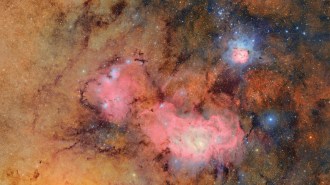Just days after NASA released the first cosmic dreamscapes taken by the newly refurbished Hubble Space Telescope (SN: 9/26/09, p. 7) three teams of astronomers have used the rejuvenated observatory to find what appears to be a bounty of the most distant galaxies known.

Analyses of infrared images of these galaxies captured in late August and early September with the newly installed Wide Field Camera 3 suggest there were fewer bright galaxies early in cosmic history and those galaxies formed stars at an unexpectedly low rate.
Because the researchers do not yet have measurements of the wavelengths that make up the starlight from these galaxies, they do not directly know how far away the galaxies lie. But the starlit bodies’ colors suggest that about 16 reside roughly 12.9 billion light-years from Earth and another five or so sit even further, a record-breaking 13.1 billion light-years away.
“We are looking back 13 billion years and seeing galaxies just 600 to 700 million years after the Big Bang, when the Universe was like a 4-year-old,” says Garth Illingworth of the University of California, Santa Cruz, a member of one of the discovery teams.
The galaxies all lie within a small patch of the southern sky, called the Hubble Ultra Deep Field, that has already been imaged by Hubble and a slew of other telescopes.
It’s the new camera’s greater sensitivity, as well as its larger field of view, that has enabled scientists to rapidly find what appear to be extremely remote galaxies, says Richard Ellis of Caltech in Pasadena, a coauthor of two of four papers that the three teams recently posted online at arXiv.org.
“This is a golden moment,” Ellis says. “All the groups independently analyzed the data with different software and broadly speaking, we’re all in agreement.”
A team that includes Illingworth and Rychard Bouwens, also of UC-Santa Cruz, posted its findings on September 11. Ross McLure and James Dunlop of the University of Edinburgh in Scotland, along with Ellis and their colleagues, posted their report on September 15. A team led by Andrew Bunker of the University of Oxford in England, again including Ellis, also posted an analysis of the new Hubble data on September 15.
The researchers all find a marked downturn in the number of bright galaxies as the telescope peers farther away and thus further back in time. That decrease in the galactic population is expected from current models of galaxy formation, comments Harry Ferguson of the Space Telescope Science Institute in Baltimore, who was not a member of any of the teams.
The findings “appear to show that galaxy formation is just starting at these [early times],” comments Simon White of the Max Planck Institute for Astrophysics in Garching, Germany.
Because the Hubble Ultra Deep Field is tiny — one one-hundred-fiftieth the apparent area of the full moon on the sky — and because the Wide Field Camera 3 has only just begun taking pictures, it is difficult to know how representative the findings are of the rest of the universe at these early cosmic times, Ferguson and Ellis both caution.
Ellis notes that the new findings also hint at a puzzle. His team estimates that the distant galaxies, which are too tiny to be clearly resolved by Hubble, are making stars at a puny rate. In some cases, that rate is as low as the mass equivalent of 0.0025 suns per year. According to current models, that rate couldn’t have generated enough ultraviolet starlight for a critical milestone in the evolution of the universe — the wrenching apart of neutral hydrogen atoms into their subatomic constituents.
About 400,000 years after the Big Bang, the cosmos had cooled sufficiently for protons and electrons to recombine into atoms. But the universe has long been reionized, with hydrogen atoms once again split into protons and electrons. Many astronomers have assumed that ultraviolet light from the first galaxies did the splitting.
This is not yet an astronomical crisis, Ellis says. It may be that the first stars were more efficient than expected at producing ultraviolet radiation. Another possibility is that ultraviolet light more easily escaped these early galaxies than it did from later galaxies.
Another possibility, comments White, is that “there might be enough undetected very small galaxies to do the job.”
New data is just starting to pour in that may solve this and other cosmic riddles, Ellis says. “This is a very exciting time.”






